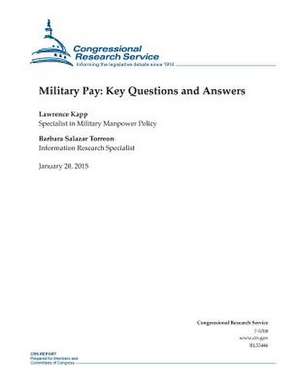Military Pay
Autor Congressional Research Serviceen Limba Engleză Paperback
Preț: 122.20 lei
Nou
Puncte Express: 183
Preț estimativ în valută:
23.39€ • 24.10$ • 19.75£
23.39€ • 24.10$ • 19.75£
Carte disponibilă
Livrare economică 10-24 februarie
Preluare comenzi: 021 569.72.76
Specificații
ISBN-13: 9781507737033
ISBN-10: 1507737033
Pagini: 26
Dimensiuni: 216 x 279 x 1 mm
Greutate: 0.09 kg
Editura: CREATESPACE
ISBN-10: 1507737033
Pagini: 26
Dimensiuni: 216 x 279 x 1 mm
Greutate: 0.09 kg
Editura: CREATESPACE
